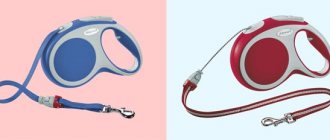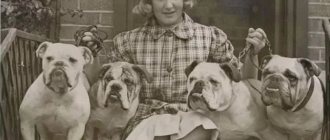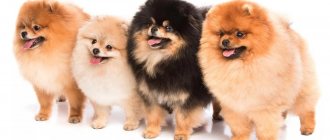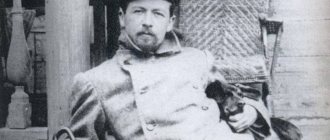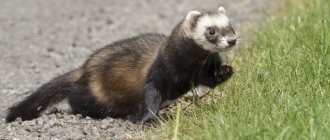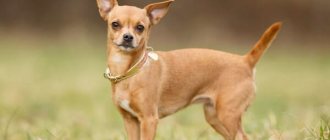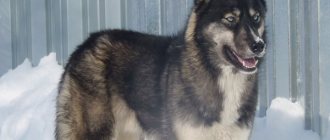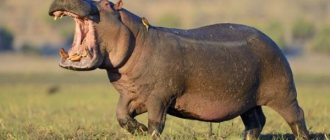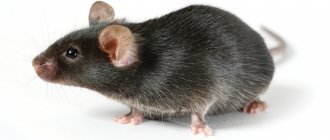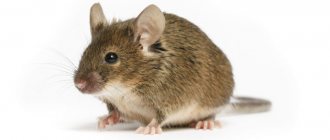Livestock » Sheep
1
2113
Article rating
Kira Stoletova
When engaging in livestock farming, many nuances should be taken into account. Not all animals are adapted to cold or warm climates. There are differences within the same species. This article will focus on sheep and rams. Let's look at what breeds of sheep are popular and talk about the features of each.
The most common breeds of sheep
Varieties of sheep and rams
There is a special classification of sheep. Each breed belongs to a specific type. Some rams are valued for meat (meat breeds), others for fleece (wool breeds), and others for fat tail (greasy types). There are few narrowly focused breeds. Basically, livestock specialists breed animals that have good productivity indicators in 2-3 areas.
There are other features that can be taken as the basis for classification. There are horned and polled sheep, fat-tailed and not so fat-tailed, hairless and covered in wool. But animals are classified precisely according to the nature of the breed’s orientation.
Classification according to production principle
It reflects the direction of animal productivity and is successfully used at present with changes and additions made to it.
| By coat | By productivity |
| Rough-haired | Meat, smushkovye, meat-wool, fur coats |
| Semi-coarse-haired | Meat and dairy, meat and wool |
| Fine-fleece | Meat and wool, wool, wool and meat |
| Semi-fine fleece | Long-haired, meat-haired, wool-meat, short-haired, meat-haired |
Karakul breed
The Karakul breed of sheep is one of the most ancient meat varieties. It is bred in many European countries, Africa, America and Asia. In addition to delicious meat, sheep have excellent skin. The Karakul sheep appeared thanks to the work of breeders from Uzbekistan. A special feature of this breed of sheep is the presence of a long tail, but the rams do not straighten it, so it hardly reaches the hock joints.
If we talk about the features of the exterior, the karakul is a hump-nosed ram with ears of medium length. The massive body is supported by thin limbs that end in powerful hooves. The head, legs and neck are covered with short hair, colored black. Over time, most fur, regardless of its original color, becomes gray. Livestock breeders characterize the depigmentation process as graying.
The wool of astrakhan sheep can be dyed black or gray. About 10% of sheep have a sur color. About 4% of sheep are white or brown. Sometimes there are individuals with pink fur.
Productivity indicators
In addition to wool, Karakul sheep are valued for their tasty meat. Meat productivity is 65 kg for rams and 45 kg for queens. The weight of a newborn lamb rarely exceeds 4.5 kg. Lambs quickly gain weight, which is an advantage of the breed. Excellent sheep cheeses are prepared from rennet obtained from 1-2-day-old lambs and sheep's milk. Livestock farmers also make money from sheep wool. It is possible to shear about 4 kg of wool from sheep per year. On average, 3 kg of wool is shorn from sheep.
Fertility is another important characteristic for livestock farmers. A flock of 100 ewes produces 140 lambs annually.
What types of sheep are there?
According to zoologists, there is no general classification of species. Some scientists propose to distinguish types of rams by the shape of their horns.
Other scientists argue that rams should be distinguished by the number of chromosomes and the structure of their DNA.But there is an opinion that most zoologists adhere to the hypothesis that the genus of sheep can be divided into 7 main species.
- Domestic sheep.
- Sovetsky Merino.
- Karakul breed.
- Border Leicester.
- Mouflon.
- Urial.
- Argali.
Caucasian breed
Rams with beautiful horns
The Caucasian breed of sheep was born thanks to the work of breeders in the Stavropol region. It is classified as the meat-wool type. This is a large sheep with long wool. The breed had a positive influence on the development of all fine-wool breeds. Sheep of the Caucasian breed can be found throughout Russia, but it is most common in the Caucasus.
The body of the Caucasian sheep is proportional. They have well-developed muscles, neck folds are present, the head, belly and legs are covered with thick hair.
Caucasian sheep do not have horns, while rams have well-developed horns. Queens are used to improve existing breeds and create new ones. The only drawback that this breed of sheep has is the absence, in some cases, of thick wool on the belly and head. But this phenomenon occurs infrequently and is due to the lack of breeding work. Another negative impact on the quality of wool is the lack of all the vitamins and nutrients necessary for the animal, therefore, when keeping the Caucasian breed of sheep, you should carefully consider the animal’s diet. Rams of this breed slowly gain weight.
Caucasian sheep are unpretentious in care, which makes them popular outside of Russia.
Productivity indicators
The meat productivity of this breed of sheep leaves much to be desired. The weight of an adult ram varies between 80-101 kg, and that of a sheep - 50-60 kg. It is worth mentioning the excellent taste of meat, for which it is valued. The average weight of the cut is 7.5 kg. When processing the clippings, 50% pure wool is obtained.
Fertility is 150 lambs per 100 ewes. Milk productivity - 100 kg per 70-day lactation period. The fat content of milk sometimes reaches 8%. The average is 6%.
Dorper
The Doper is a breed that is used only for breeding for meat. The fur of these animals is short and grows unevenly, so it is impossible to obtain sheepskin from this breed.
This type of sheep was bred specifically to be kept in the hot and dry conditions of South Africa, where no other sheep could live normally and bring profit to farmers. Adaptation to harsh climatic conditions was a priority for breeders, which is why this breed turned out to be hairless.
It is worth noting that the dorper tolerates not only terrible heat, but also cold. This breed is not common in Russia due to its high cost. Russian farmers buy the semen of purebred rams and impregnate local females, which allows them to produce several generations of sheep with characteristics similar to the original breed. The animals have an unusual color: the body and limbs are white, and the neck and head are black.
The meat products of these sheep deserve attention, because this lamb is considered the best. Dorper meat is tender, soft and does not have the characteristic lamb smell. The meat is attractive in appearance and has a characteristic marble pattern. Marbling appeared due to the fact that the fat layers are represented by thin stripes, and not large areas, like in regular beef. The weight of males reaches 150 kilograms, and females - 100 kg.
Latvian dark-headed breed
The Latvian dark-headed sheep breed is the result of the work of Latvian livestock specialists, whose goal was to obtain highly productive meat rams. They did not quite cope with this task, since the meat productivity indicators are average. The breed has become widespread not only in Latvia, but also in Russia.
As for the exterior, the animals have good meat shapes and a strong constitution. They look quite elegant for their weight, thanks to their thin bones. The short and fairly wide head is connected to the body by a short neck. To match their heads, rams have a wide back and the same chest, going deep. The body is supported by widely spaced straight limbs. The predominant color of the fleece is up to 9 cm long. Sometimes there are individual hairs dyed in other colors.
Productivity indicators
The live weight of rams is 1 quintal. An adult dark-headed sheep weighs about 60 kg. This is an early maturing breed. Lambs quickly gain weight due to the high milk productivity of the queens during lactation (about 180 kg of milk). The net yield of meat after slaughter is 60%.
Fertility of queens is 170 lambs per 100 queens. Trimmed - 5 and 3.5 kg for rams and sheep. After processing the shearing, up to 55% of high-quality wool remains. Based on productivity indicators, the Latvian dark-headed breed is classified as a meat-and-wool type.
Our best breeds of meat sheep
The main task when breeding meat sheep breeds is to gain weight as quickly as possible so that the animal reaches the required weight. To obtain meat, it is not necessary for the ram to be an adult, since already at one year of age they can gain up to 90% of the weight of a full-fledged individual. Let's take a closer look at several representatives of this species.
Gorky
This breed of sheep has a muscular build. Every day, sheep gain at least 100 grams of weight. If you adhere to the rules of nutrition and provide all the conditions of detention, it is possible to feed a male weighing 120-130 kilograms with a small stature.
With sheep it is a little more difficult, but adult representatives gain up to 80 kg. The yield of meat products is quite high (about 55%), in addition to the meat of the uterus they produce good milk.
Nizhny Novgorod sheep are very similar to their English ancestors - Hampshires. They have a powerful, barrel-shaped body and a wide head on a fleshy neck. They are distinguished by an ermine color - the legs, head and tail are black. Representatives of this breed do not have horns.
North Caucasian
The popular breed is a universal species. It is distinguished by high milk yield and high-quality, dense and soft fleece. The meat yield is somewhat less than that of other representatives of the meat sector.
The weight of adult rams reaches 110 kg, sheep - 60-70 kg. With a height at the withers of about 70 cm, the animals have a wide back and lower back. They have well-defined meat forms - developed muscles of the limbs and hams.
Kuibyshevskys
Another variety of meat breed, which differs from its “brothers” in its strong bone structure. They are grown to obtain meat products in Russia without any special difficulties.
Rams and sheep tolerate sub-zero temperatures well and do not suffer from heat or severe frosts. If you make every effort to feed the lambs, by the age of 5-6 months their weight will be at least 30 kilograms.
Raising sheep for meat production is a profitable business with a stable income. The breeder is faced with the task of monitoring the weight of the lambs and determining when the animal has already reached the required weight standards.
Katumsky
Modern breeding research has made it possible to develop a new breed adapted to life in the humid climate of northwestern Russia. Smooth-haired sheep do not require shearing and are distinguished by accelerated weight gain and high yield of meat product.
Katumskaya lamb has proven itself to be of high taste quality. Due to their early maturity, the sheep are nicknamed broilers; by the age of one and a half years, the lambs reach a weight of 90-95 kg. The weight of adult rams reaches 110-120 kg, sheep - up to 75-80 kg. Animals easily tolerate any cold weather under simple shelters equipped with heated drinking bowls. They are distinguished by a calm, phlegmatic character and the ability to not lose weight with meager food.
Tashlinskaya
Today, this breed is one of the latest results of selective crossing with strict selection of individuals for the most desirable traits. The meat of Tashlin sheep has excellent taste and is comparable to marbled beef.
Representatives of the breed have pronounced meat shapes and a harmonious physique. The average weight of adult rams is about 100-110 kg, sheep - 65-70 kg. Lambs grow quickly and gain up to 230 g of weight per day. In the best representatives of the breed, by the age of 3 months, the weight reaches 38-45 kg, and the daily gain is 350-400 grams.
West Siberian
This breed of sheep was bred in the North Caucasus. An interesting fact is that these sheep have no analogues, since scientists spent 18 years to create a West Siberian breed of sheep, and English scientists also helped them in this. This breed was created by crossing Kuban rams and Siberian sheep. The main difference from other breeds is that they can produce more meat than other sheep breeds.
From one individual you can get 50% meat, when in other breeds this figure drops to 40%. Another feature they have compared to others is their high fertility. Already five-month-old lambs will weigh 40 kilograms, an adult male 120 kilograms, and a female 70 kilograms.
Edelbay
Raising sheep for meat
Edelbay is considered the most beautiful among the representatives of the meat and fat trend. They are well built, the tail has a square format. The height at the withers of an adult animal is 80 cm, and the body length is 82-83 cm. But these are average figures that may vary slightly.
The coat is colored black, red or brown. The latter is rare. Studies have shown that red Edelbai have lower wool and meat productivity than their black and brown counterparts.
Productivity indicators
Rams gain up to 160 kg of weight. On average, the meat productivity of rams is 115 kg, and that of queens is 95 kg. Females gain weight faster. The weight of a newborn lamb is 6 kg. Yarki weigh 1 kg less. Already by 4 months of age, the weight of the fat tail, deposited in the back of the body, is 40 kg. The daily gain with appropriate nutrition is 200 g. Lamb meat of the Edelbay breed is considered dietary and is highly valued on the market.
This breed of sheep is not known for its fertility. Queens rarely produce 3 lambs per year. During lactation, sheep produce an average of 150 liters of milk with a fat content of 6%. Sometimes the fat content of milk is 9%.
The wool productivity of Edelbai rams is also impressive. It is 5 and 2.5 kg for rams and sheep. Moreover, more than 50% of the clipping is fluff. Dead hairs are practically absent.
Breeds of sheep for meat and fat production
In another way, these sheep are called fat-tailed. They can be easily distinguished from the others by their large fat sac in the sacrum area. The homelands of meat and fat animals are countries with very difficult climatic conditions, for example, states such as Tajikistan and Afghanistan. Dry climatic conditions and the virtual absence of traditional pasture lands are the reason for the characteristics of these types of sheep.
The main feature of fat-tailed animals is their very large size (representatives of this species are the largest among all types of sheep). Their second important feature is the excellent adaptability of these animals to almost any vagaries of weather. Well, the third feature is their unpretentiousness in feeding. At their core, fat-tailed sheep are somewhat reminiscent of camels. In addition to fat, the fat tails of these sheep contain a large amount of various nutrients, which allows these animals (like camels) to go without water or food for two or three days.
In addition, they have high immunity to infectious diseases and can feed on open pastures year-round.
The main disadvantages of such animals include their low level of fertility. It is extremely rare for a litter of fat-tailed sheep to have more than one lamb. Another disadvantage of fat-tailed sheep is the low quality of their wool, which is practically not sold.
The most famous breeds of meat and fat sheep breeding include: Jaidara, Edilbaevskaya and Gissar.
The live weight of an adult fat-tailed male ranges from 110 to 190 kilograms. The females of this breed, although they look much more modest than the males, still reach a weight of 75 to 90 kg. The weight of fat found in the fat tail of these animals can reach up to 14 kg.
East Friesian breed
The East Friesian breed comes from Germany. It is universal. It is valued for its meat, lard and wool.
Eastfriesian sheep are large in size. They have a curved nose line and no fleece on their head and thin tail. Long ears point towards the nose. The chest and back are wide, drooping croup. Eastfriesian sheep have well-developed muscles. The coat is painted white.
Sheep of this breed are not distinguished by their endurance and do not tolerate climate change well, but if a purebred sheep is crossed with a local breed that has endurance, it will be possible to increase the level of endurance and acclimatization.
Productivity indicators
The weight of an adult ram is 115 kg. Queens weigh 30 kg less. By 12 months, the Friesian sheep practically reaches its maximum weight, which allows us to classify this breed as early maturing. Daily growth with proper care and quality nutrition exceeds 300 g.
The wool harvest is 6 and 4.5 kg per ram and sheep, respectively. The fleece is short and soft to the touch. The net yield of fleece is 70%. Milk productivity - 650 kg per lactation. Some farmers breed East Friesian sheep specifically to produce milk with a fat content of 6.5%.
Prekos
The Prekos breed is one of the meat-haired breeds. In addition to productivity, animals also have an attractive appearance. The ancestors of the Prekos were Merino sheep and the English Leicester breed.
Breeders bred this species at the end of the last century and tried to combine all the qualities of its predecessors in this breed. The homeland of this species is France, then pre-mows began to appear in German livestock lands. Only in the early 30s of the last century did prekos appear in Russia and quickly became a common breed among Russian farmers. These sheep became widespread in the Soviet Union during the post-war reconstruction of the country. Prekos are bred in Africa and Europe.
This species can only be kept under special climatic conditions; it does not take root everywhere. If the prekos lives in a hot, difficult climate and is grazed on land with a small variety of green forage, then you should not expect productivity from it. However, if the animal is placed in suitable conditions and fed correctly, then the productivity will please any farmer.
Characteristics of this type:
- The weight of males reaches 110 kilograms, the weight of females is 60 kilograms.
- The skin is dense, smooth, folds do not form.
- From rams you can get up to 10 kilograms of raw wool per shearing. From shearing a sheep you can get 4 kilograms of sheepskin.
- The breed's fertility is above average, and the queens are early maturing.
- Lambs grow quickly and by six months gain weight up to 50 kilograms.
Buubey
Sheep can live outdoors
Buubey is a meat breed whose homeland is Buryatia. This Buryat sheep is also valued for its high quality fleece. Buubey lambs tolerate low temperatures well. They are suitable for pasture keeping. It is enough to build a canopy on the site that will protect the animals from natural precipitation and strong winds.
Buubei are well built, with a large body and thin legs. The body is rectangular in shape and ends with a short tail. The head is neat, the nose line is curved. The fleece is colored white and consists of down and axial hair. At the same time, in percentage terms, down accounts for 80% of the total wool.
Productivity indicators
Meat productivity is 95 kg for rams and 55 kg for sheep. This is an early maturing breed. In the first 7 months of life, lambs gain 40 kg. If we talk about the net yield after slaughter, it is 50%. Meat without the specific smell inherent in lamb.
Wool productivity is low. It is 1.5 and 1 kg for rams and ewes, but the resulting wool is of high quality. Its length reaches 20 cm. As for fertility, Buubey has high rates. A flock of 100 sheep produces an offspring of 95 heads. It is also difficult to find a sheep that has more developed maternal instincts than the Buubei breed.
general characteristics
These pets are representatives of the class of mammals, order of artiodactyls, suborder of ruminants, and have a narrow muzzle. They have thin, mobile lips, and sharp, obliquely set incisors are placed on their jaws.
The lifespan of these livestock is about 14 years, and their economic life is up to 8 years. They reproduce rapidly and reach sexual maturity in six months. Fertility – 1–2 cubs.
Average body temperature is 40 °C. Its fluctuation is affected by gender, age, even time of day.
| View | Number of breaths per minute | Number of pulse beats per minute |
| Lambs | 15–20 | 80–120 |
| Older individuals | 12–15 | 85–95 |
| Rams | 9–12 | 68–80 |
The coat of animals contributes to optimal adaptation to heat and frost. The thickness of the skin is determined by the number of hairs per 1 cm² of skin. It protects sheep from harsh climatic conditions and mechanical injuries.
Skin derivatives are considered:
- Udder. This is the mammary gland, which is located in the lower abdomen between the thighs. It consists of two proportionate lobes with nipples on each.
- Horny formations. These include horns and hooves. The first are located on the frontal part of the skull and are constantly growing in length. The second formations are a non-standard end of the finger, which protects against external negative influences and is considered a kind of organ of touch.
Mammals have a four-chambered stomach. This device is capable of digesting roughage and creating a supply of microelements, vitamins and high-calorie elements in the form of fat.
Domestic sheep are herd animals with well-developed sensory organs, but they are emotional to stress factors.
Tashlin breed
The Tashlinsky breed was bred in 2008 by livestock specialists of the Stavropol region. These are meat rams, but Tashlinsky sheep have excellent quality fleece and high milk productivity. Farmers also note the fertility of Tashlin queens.
Representatives of this breed do not have horns. They are well built, their shape corresponds to the meat orientation of the breed.
Productivity indicators
Meat productivity is 96 and 60 kg for rams and sheep, respectively. Lambs are gaining weight well. The daily gain during the first 5 months is 200-220 g. Sometimes the weight gain reaches 400 g per day. But such results can only be achieved by organizing proper nutrition.
Wool productivity is 6.5 kg for rams and 4.5 kg for sheep. At the same time, the net yield is more than 60%. The length of the fleece of the Tashlin sheep is 115 mm. A flock of 100 queens produces a litter of 160 lambs and is bright.
It is advantageous to slaughter lambs at 9 months of age. This is due to the fact that the percentage of meat and bones during this period is 80 to 20.
Karachay sheep
Karachay sheep owe their name to the locality where they were bred. No genetic material from any other species was used to create the breed. Moreover, as experiments by breeders have shown, crossing this sheep with representatives of other species did not end in success and did not lead to improved properties. This species is considered self-sufficient and is not used for attempts to breed new species of sheep.
In the wild, these animals showed good adaptive abilities. Karachay sheep can survive in mountainous conditions, in poor climate, they make transitions to obtain food.
The height of the individuals is slightly more than half a meter, the body length is about 1.5 meters. Thanks to being raised in mountainous areas, this breed has developed hooves that are particularly durable and resistant to damage.
Males grow large curling horns; females also have horns, but they are small. Experienced livestock breeders who have been breeding this breed for a long time note that anomalies are relatively common when additional horns grow. Most Karachay sheep have a uniform black color; sometimes you can find representatives with gray or red fur, but this is rare.
Important! The fertility of this species is low, but this is compensated by adaptation and resistance to any diseases. Immunity ensures minimal mortality of animals even in the harshest conditions.
Vyatka breed
Disease-resistant breed
The Vyatka breed was born thanks to the work of Russian livestock specialists. During the selection, the Soviet Merino and Prekos breeds were used. This is a large meat-wool sheep. It looks massive and has a square format. The advantages of the breed include resistance to many diseases, adaptability to difficult climatic conditions, unpretentiousness in food, and precocity. The head is covered with thick and long hair. The short nose is not curved, the ears protrude to the sides.
Productivity indicators
The weight of an adult ram reaches 1 quintal. A sheep weighs 50 kg less. If we talk about maximum productivity indicators, then it is 140 and 80 kg for rams and sheep, respectively. The meat is valued for its taste. It can even compete with marbled beef.
Sheared wool from a ram - 6 kg. The female produces 2 times less high-quality fleece. Some individuals produce 12 kg of wool per year. The length of the fleece is 8.5 cm. The yield of fleece after cleaning is 55%. A herd of 100 queens produces a litter of 140 lambs with strong immunity.
Vyatka sheep are popular in Russia and Ukraine.
How to choose the right breed?
Any novice livestock breeder can easily get confused by all the different breeds. Each sheep has its own advantages and disadvantages. It is difficult to find their optimal ratio.
First of all, you need to understand what your goal is in raising sheep. You need to answer the question whether you want to receive and sell meat, sheepskin or dairy products. Then it will become much easier to find a suitable option. You also need to understand that having several breeds at once is difficult and expensive. It will be necessary to organize their maintenance in such a way that spontaneous mixing of species and the appearance of non-purebred offspring does not occur.
General tips from livestock farmers:
- If you want to choose a meat-and-wool breed, then the Kuibyshev breed and merino will be the most unpretentious and cost-effective. You need to pay attention to them if you plan to raise a herd in Russian climatic conditions.
- The best meat breeds are Gorky sheep and Texels.
- Fat-tailed or, as they are also called, meat breeds also represent great benefits for owners. Gissar sheep are profitable from this type.
Lacon
The homeland of Lacon sheep is France. They have high rates of meat and milk productivity and are valued for their high quality fleece. During the selection, Merino sheep (fattails) were used. French livestock specialists sought to obtain dairy sheep. Pedigree Laconies are the best dairy sheep in France.
In terms of conformation, Lakones have well-developed bone structure, a deep chest and a muscular rear end. The semi-fine coat is colored white and yellow. This is the most common breed in France. It is from its milk that almost all sheep cheeses are made in this country.
Productivity indicators
An adult ram weighs about 90 kg. The sheep is 45 kg lighter. During the lactation period, a sheep produces about 150 liters of milk. Sometimes milk yield is more than 200 liters per sheep. Fertility is lambs per flock of 100 ewes. They begin to hatch when they reach 7 months of age.
Where do sheep live in the wild?
Wild sheep live only in the countries of the Northern Hemisphere and inhabit the foothills and mountainous areas of Greece and Turkey, North Africa and Spain, Crimea and Kazakhstan, Pakistan, Afghanistan, Russia and India. Some species of bighorn sheep live in deserts. Most Eurasian species can be found in the Caucasus, Pamirs, Tien Shan and Altai. In addition, mountain sheep are widespread in Kamchatka, Transbaikalia and Eastern Siberia, as well as in the mountains of Tibet and the Himalayas. On the North American continent, the natural distribution area of the genus is confined to a narrow strip of the Pacific coast, stretching from Mexico to Alaska.
The habitat of domestic sheep is almost all continents, with the exception of Antarctica and tropical areas with high humidity. Today, sheep and rams are bred in all countries of Europe and Asia, North and South America, New Zealand and Australia.
Animals living in natural conditions are tied to a specific area and never leave it. Throughout the year, wild sheep make seasonal migratory movements, rising to the peaks in the summer months and descending to the valleys during the winter cold. A herd of sheep in the summer averages 30 heads, and with the onset of winter, some communities can reach about 1 thousand heads. Typically, a female ram with her young is kept separately from scattered groups of males. A feature of the herd's communicative behavior is constant control over the surrounding situation. An alarm signal received from any member of the sheep herd is a guide to action for the entire community.
Domestic sheep, unlike their wild relatives, have mixed herds, and the herd instinct is very strongly developed, requiring the obligatory presence of at least one member of the herd nearby. A sheep left alone in isolation experiences severe stress.
East Friesian breed
German livestock specialists are involved in breeding the East Frisian breed of sheep. Of all the Friesian breeds, it has gained the greatest popularity. This is due to its high meat productivity rates. There are individuals whose live weight reaches 150 kg.
The sheep has tall graceful legs and a medium-sized, proportionally built body. There is no hair on the oblong head and there are no horns. Compared to all other parts of the body, the chest is well developed. There is no fleece on the long tail. The body is covered with uniform hair.
Productivity indicators
According to the productivity table, the weight of a ram varies from 110 to 130 kg. A sheep weighs 40 kg less. With proper maintenance, the daily gain is 200 g. Lambs grow faster than lambs. The cut is on average 3 kg (yield - 70%). During the lactation period, a dairy sheep produces 650 kg of milk with a fat content of 6.5%. Purebred herds are kept primarily for milk production.
Zoological classification
It is built according to the length and shape of the tail. It was these elements that reflected differences in breeds. The length of the tail is determined by the tip, more precisely by its relation to the hock joint. And the shape is based on the level of formation of fat deposits along the caudal vertebrae.
| Groups | Description of differences in breeds |
| Kurdyuchnaya | Underdeveloped, very short, of 5–6 vertebrae with fatty deposits at the root of the tail |
| Short-fat tailed | Short, fat deposits around caudal vertebrae, number of vertebrae 10–12 |
| Long-fat-tailed | Long, with fat deposits of different constitutions, vertebrae 22–24 |
| Short-skinny-tailed | Skinny, of 10–12 vertebrae |
| Long-skinny-tailed | Skinny, of 20–22 vertebrae |
| Anurans | No tail |
Productivity indicators of some breeds
Powerful sheep
It is not possible to consider a description of the breeds that are bred by livestock specialists from all over the world. Let's look at the productivity indicators of some interesting varieties bred in different countries.
- The North Caucasian breed is distinguished by high fertility (125%). Its meat productivity is 100 and 60 kg for rams and ewes.
- Livestock specialists of Tatarstan have achieved great success in sheep breeding. The Edilbaevskaya breed, for example, is easy to maintain and has high meat productivity (100 kg). The Kuibyshev longhaired breed is valued for its fleece. Its length is 12 cm. The meat productivity of the breed is 90 and 60 kg.
- The sheep breeds bred in Dagestan are also popular all over the world. The best Dagestan breeds, the population of which is being increased by local livestock specialists, are the Gergebil fat tail, Gissar and Grozny. And, of course, the Dagestan breed, which is valued for its fertility and fleece, which is sheared annually from a sheep at 3.5-4 kg.
- Kazakh livestock specialists raise impressively sized lambs. So, for example, the Kazakh breed bred in Kazakhstan grows up to 150 kg. The Edilbaevskaya breed, which was also bred in Kazakhstan, has the same characteristics of meat productivity.
- The Askanian sheep, bred by Ukrainian livestock specialists, is famous for its clipping. For rams it is 17.5 kg. Sheep are inferior by 8 kg. But the net yield of wool produced by Ascanian sheep is only 45%. It is not uniform, but is of high quality.
- The Gorky sheep, common in Russia, is valued for its wool, milk and early maturity. Daily growth exceeds 200 g, and milk yield during lactation is 150 kg. These sheep bred in Russia are fertile and easy to care for.
- The Kalmyk sheep, bred in Kalmykia, is popular. She is prolific, produces up to 17 kg of fat tail and has a specific color. Its chest and head are colored black, and the rest of its fur is white. This sheep is unlike any other breed.
- The northern short-tailed sheep cannot boast of high rates of meat productivity. Annual wool clippings also leave much to be desired, but the Northern breed is distinguished by its fertility and unpretentiousness. It is ideal for a small farm.
Common and elite breeds
If we talk about the most common breeds, then these include Gorky, Saradzhinskaya, Yaroslavl, Kulundinskaya, Gusarskaya, Georgian, Charolais, West Siberian. But in different regions they are breeding breeds whose maintenance will not cause trouble due to the climatic characteristics of the region and available feed. Thus, in Siberia, the most common West Siberian meat breed, and in Australia - Merino sheep. In Europe, popular breeds with interesting names include Balbaz, Blue do mein, Asaph, Lacayune, Finnish Landrace, Zwartbles (a Dutch breed of sheep), Katahdin and Lincoln. The West Siberian breed has high rates of meat and wool productivity.
There are also expensive elite breeds. These include the Romney March. Their coats can be silver, chocolate or cream in color. The Romney March is a meat breed that attracts attention with its appearance. Romney Marsh even has uniform hair covering her legs. Most purebred sheep do not have this feature.
The best foreign meat sheep breeds
Foreign breeds of sheep are highly productive, but many of them cannot be bred in Russia because they are adapted only to certain living conditions.
Prekos
The Precos, a breed of French origin, is popular and is bred all over the world. Sheep are barrel-shaped, strong, have high immunity, are unpretentious in feeding and bear good fruit. A newborn lamb weighs 5 kilograms, and a four-month-old lamb already weighs 35 kilograms of live weight. An adult male weighs approximately 130 kilograms; when slaughtered, 55 kilograms of meat comes out. Females weigh 65 kilograms at one year of age.
Vendée
Photo of the Vendée sheep breed
An ancient, meat breed of sheep, bred by the French. These animals are unpretentious in terms of feeding and maintenance, and tolerate winters well. Their meat is lean, with a pleasant smell and beautiful, marbled veins. Adult males can reach a weight of 150 kg, queens - 110 kg. Newborn lambs weigh up to 6 kg, but at 4 months they can reach 60 kg. Weight gain is approximately 450 g per day. Slaughter meat yield is 50%. Sheep of this breed, like most other species, are allowed to be slaughtered until they are one year old (ideally 4-6 months).
Barbados black-bellied
A short-haired meat breed that originated in the Caribbean. There is also a horned breed bred in America, it was created by crossing with the Ramboulier breed. The size of the sheep is medium, the bones are strong, and their color is dark red. And males have a mane on their chest and neck, hair length is 12-16 cm. The weight of an adult male is up to 90 kilograms, and females up to 60 kilograms. Lambs are born weighing 3 kilograms; by the age of three months they reach 17 kilograms. Females give birth to three lambs in two years, and the females of this breed have a lot of milk, which ensures a daily weight gain of the lamb of about 250 grams.
Zwartbles
The breed is known all over the world not only for its delicious meat, but also for its softest fleece and vitality. It was developed at the end of the 20th century. A distinctive external quality is a white stripe on the head. Females give up to 3 lambs per lamb. The weight of the newborn is about 3.5 kg. At 120 days, the lamb weighs about 45 kg, gaining 400-600 g daily. An adult ram weighs 130 g, the uterus weighs 100 kg. Slaughter yield of carcass is 50-59%. The meat is very tender, dense, with a sweet taste and pleasant aroma.
Latvian darkhead
Bred in Latvia. They were obtained as a result of 10 years of crossing at the beginning of the 20th century. Oxfordshire, Shropshire and local, aboriginal sheep are involved in the breeding work. The result was the emergence of Latvian dark-headed sheep. This hybridization was aimed at increasing the level of meat productivity.
Representatives of the breed are distinguished by a strong constitution, a deep and wide black chest, which protrudes forward. The limbs, along with the ears and muzzle, are painted black. That is why the name of the breed arose. Weight of animals:
- adult rams – 90-100 kg;
- females – 50-55 kg.
Yarks are characterized by rapid maturation, and the animals themselves grow quite quickly. If a newborn lamb weighs 3-4 kg, then after 9-10 months. life weight reaches 40-45 kg. Of course, obtaining such indicators is possible only if the rules of care, maintenance and feeding of individuals are observed.
Interesting! The quality of meat of the Latvian dark-headed breed improves when mixed with Tsigai sheep.
Texel
Representatives of this breed are one of the leaders among meat-wool sheep. The result of many years of breeding work was a high-quality combination of disease resistance, unpretentiousness with a high yield of clean meat and good wool.
Texels have a strong, proportionally built body with a wide back and a refined loin. Adult males grow up to 90 cm at the withers, sheep - up to 70-75 cm. The maximum weight of a male animal can be 160 kg, the bright ones are much smaller, reaching 70 kg. Newborn lambs weigh from 5 to 7 kg.
Wiltshire horned sheep
England is considered the homeland of the animals, and the breed was most popular in the eighteenth century. Animal heads are decorated with horns. Due to their unpretentiousness to the food supply, sheep can be grazed on almost any pasture.
Animals that have reached ten months of age are selected for mating.
Lamb is in great demand; meat products are distinguished by tenderness, juiciness and lack of fat. Meat yield is 55% after slaughter.
The meat direction in sheep breeding continues to be developed, using Wiltshire breeders for crossing with merino females.
Dorper
This breed appeared in the last century in South Africa, thanks to the crossing of the following breeds: Dorset Horn. Fat-tailed Persian blackheads. Fat-tailed. The Merino breed was also crossed, which gave the sheep a pure white color. Because South Africa has harsh weather conditions, droppers had to survive in extreme cold and with minimal food. Thanks to this, they have developed excellent immunity, resistance to disease, and they can endure the harshest, coldest and snowiest winters. The same applies to summer; droppers can even live for two days without water in the summer. The face of this breed is shortened, so the head appears small and cube-shaped. Although their legs are short, they are strong because they can support their own weight. Males can grow up to 140 kilograms, and females up to 95 kilograms. Lambs gain weight quickly and at the age of three months they already weigh 25 kilograms, and by the age of six months their weight is 70 kilograms.
Care and maintenance
A domestic purebred ram is an unpretentious animal and is easy to care for. The main requirements are sufficient territory for grazing and spacious housing. The flock spends most of the year on pasture. They also set up a pen there; it can be open, with one gate, on which there is a reliable handle for closing. To graze one sheep or lamb you need 1 hectare of land. There should be a pond near the grazing site; the animal needs about 10 liters of water per day.
Sheep and rams need proper care
In winter, the flock is kept in a sheepfold. For 10 females with lambs you need 40 m² of space. The breeding ram or rams are kept in separate rooms, they must be separated by partitions so that the males do not fight. The temperature in the barn should not be lower than 9°C; drafts should not be allowed: they are harmful to sheep. When a farm is being built in warm regions, heating is not provided. In cold areas you need to make good insulation.
Feeding
Feeding livestock is not difficult: they eat almost any plant. In the summer, they have enough green grass, provided that the shepherd takes the flock out to pasture for at least 13 hours a day. In winter, animals should be fed natural food. Sheep include in their diet:
- Juicy feed: silage and root crops (beets, potatoes, carrots, etc.).
- Roughage: hay and straw.
- Concentrated feed: cereals, corn, peas and other legumes, bran, cake.
The sheep are given food three times a day. Evening feeding should not be too filling. Before pouring concentrates into the nursery, the animals must be given water. The amount and proportions of food depend on the purpose for which the animals are raised. For good wool growth, the diet should consist of grass and hay. When fattening for slaughter, concentrates, cakes, and bean hay are given.
Mating is planned for late spring or early autumn. It is advisable to crossbreed individuals within the same breed. 2-3 males are allowed to breed, and rams that are unsuitable for mating are sterilized. Castration is carried out before the onset of puberty, at 5-6 months.
5 months after mating, small lambs appear. A female domestic sheep can give birth to 2-3 babies at the same time. The process lasts about half an hour, the afterbirth separates easily. If childbirth is difficult, females are injected with oxytocin and the fetus is pulled out by hand, but this need rarely arises. The ewe feeds the lambs until 2-3 months, after which the young animals are transferred to adult feed.
If females are milked, the young are weaned earlier. But weaning too quickly and switching to adult feed can be harmful: lambs begin to experience dyspepsia, ketosis, kidney failure, and weight gain rates drop. Weaned lambs are often affected by worms (ringed worms and tapeworms) and intestinal infections.
Features of an indoor sheep pen
To keep sheep, it is necessary to create a special indoor space. When creating a pen, you should follow some rules:
- avoid drafts when keeping these animals;
- provide sufficient containers for food and water;
- provide the necessary area for each animal. A male needs about 4 sq.m., a female - 2 sq.m., a newborn individual - about 2.5 sq.m. These indicators are the minimum acceptable values. Increasing the paddock area will have a positive effect on sheep productivity. Some farmers do not insulate the pen, because the flock tolerates hot and cold climates. But when keeping sheep, sudden temperature changes should be avoided. Pregnant and lactating females should be kept warm;
- The entrance to the pen should be wide. Sheep maintain a herd mentality even when entering a room. The constructed sheepfold must be ventilated. The lack of fresh air will negatively affect the animal's immunity. However, the farmer should not allow drafts indoors. Window frames should not have gaps.
- It is advisable to locate the pen close to the grazing area.
Population and species status
Recently, the habitat, as well as the total number of mountain sheep, has noticeably decreased. A decrease in the number of such animals leads to a decrease in the number of predatory animals, whose diet is highly dependent on the presence of these ungulates.
Populations of mountain sheep in various countries:
- About 1 thousand individuals live in Afghanistan, while about 700 of them were counted in the Lesser Pamirs, and about 250 individuals in the Greater Pamirs.
- In China. Experts believe that up to 30 thousand of these animals live in the Middle Kingdom, although some experts are inclined to believe that this figure is much lower. Calculations are based on animal density, so the error can be significant.
- In India. The total number of such animals in this country barely reaches 4 hundred individuals.
- In Kazakhstan. The exact number is not known, especially of those individuals that live in the Tien Shan mountains. The total number, according to experts, is within 10 thousand individuals.
- In Kyrgyzstan. Based on research conducted by experts, it is believed that the total number of mountain sheep in this country is about 16 thousand.
- In Mongolia. The Academy of Sciences conducted research in 2001 and determined that the population of mountain sheep is about 17 thousand individuals.
- In Nepal. There are no exact counts, but it is believed that the populations of these animals in this country are small.
- In Pakistan. The exact number of these animals is unknown, but experts believe that no more than a hundred individuals remain.
- In Russia. In the southern regions of Russia in Altai, an average of up to fifty individuals live, while the animals are distributed into subpopulations, each of which includes up to fifty individuals. In the Altai Nature Reserve there are up to 80 mountain sheep, in the upper reaches of the rivers of the Sailugemsky ridge there are up to one and a half hundred individuals, and also in the Republic of Tuva on the slopes of the Chikhachev ridge there are up to 4 dozen mountain sheep.
- In Tajikistan. This country is home to between 13 and 14 thousand individuals, with the highest density found on the border with China.
- There are almost 2 thousand individuals in Uzbekistan, with 90 percent of the population inhabiting the Karautsky ridge.
The benefits of domestic sheep
The benefits of domestic sheep are beyond doubt. Fabrics and carpets are made from sheep's wool; sheepskin is used to sew fur coats and sheepskin coats. Sheep are needed for meat and milk, from which cheese is made. Fat-tailed breeds of sheep are bred specifically for fat production. Some species of wild sheep are hunted. Mountain sheep are killed for meat and horns, used for making jewelry or as a hunting trophy.
What do sheep eat?
The nutrition of sheep directly depends on their habitat and time of year. They have the ability to easily adapt to environmental conditions and are absolutely unpretentious to food. In spring and summer, sheep eat bluegrass, desert sedge, goose onion, feather grass, fescue, wheatgrass, and legumes. In addition, the diet of rams includes various berries, foliage and green shoots of oak, hornbeam, maple, as well as other shrubs and trees. With the onset of cold weather, after the snow cover falls, sheep feed on wormwood, dry cereals extracted from under the snow, almond and rose hip branches, mosses and lichens.
At home, sheep are fed hay, to which 25% straw is added. Oats or ground barley are used as a concentrated additive to the diet of domestic sheep and rams.
Breeding wild sheep
Of all the types of wild sheep, only mouflons and argali can be tamed and kept in a zoo or private farm. To keep them, you need to organize special spacious pens with high, strong barriers and a small room with a feeder and drinking bowl, in which the animals can hide from the heat or cold. The rest of the wild representatives of the sheep genus die very quickly in captivity. To restore the species, they are creating protected areas where hunting is prohibited.
Signs of pregnancy in a female ram
Not every mating brings the expected results. The farmer needs to quickly determine the presence of pregnancy in order to provide timely care for the animal.
The main signs of a fruitful mating:
- Males do not show interest in the female.
- Older sheep become irritable after insemination.
- Only a veterinarian can accurately determine the presence of pregnancy. The method of palpation of the animal's rectum is used.
- Farms use the ultrasound method.
Breeding period
Sheep reach puberty at 6 months. However, experienced farmers do not recommend mating too early. This is because the sheep's body is still developing. Carrying a baby can have a negative impact on the animal's body. In the case of early fertilization, all nutritional components from food will be spent on bearing the fetus. The growth and development of the female will slow down.
The process of fertilization of female rams is recommended to be carried out when the body weight becomes at least 75% of the weight of an adult. Young females should not be actively fattened for speedy fertilization. As a result of excess feed consumption, the likelihood of obesity increases. Sheep may develop fatty deposits in the udder. This will cause problems with feeding the newborn lambs. But you shouldn’t delay the moment of inseminating the female.
Important! The most suitable period for mating is 12-18 months after the birth of the animal.
